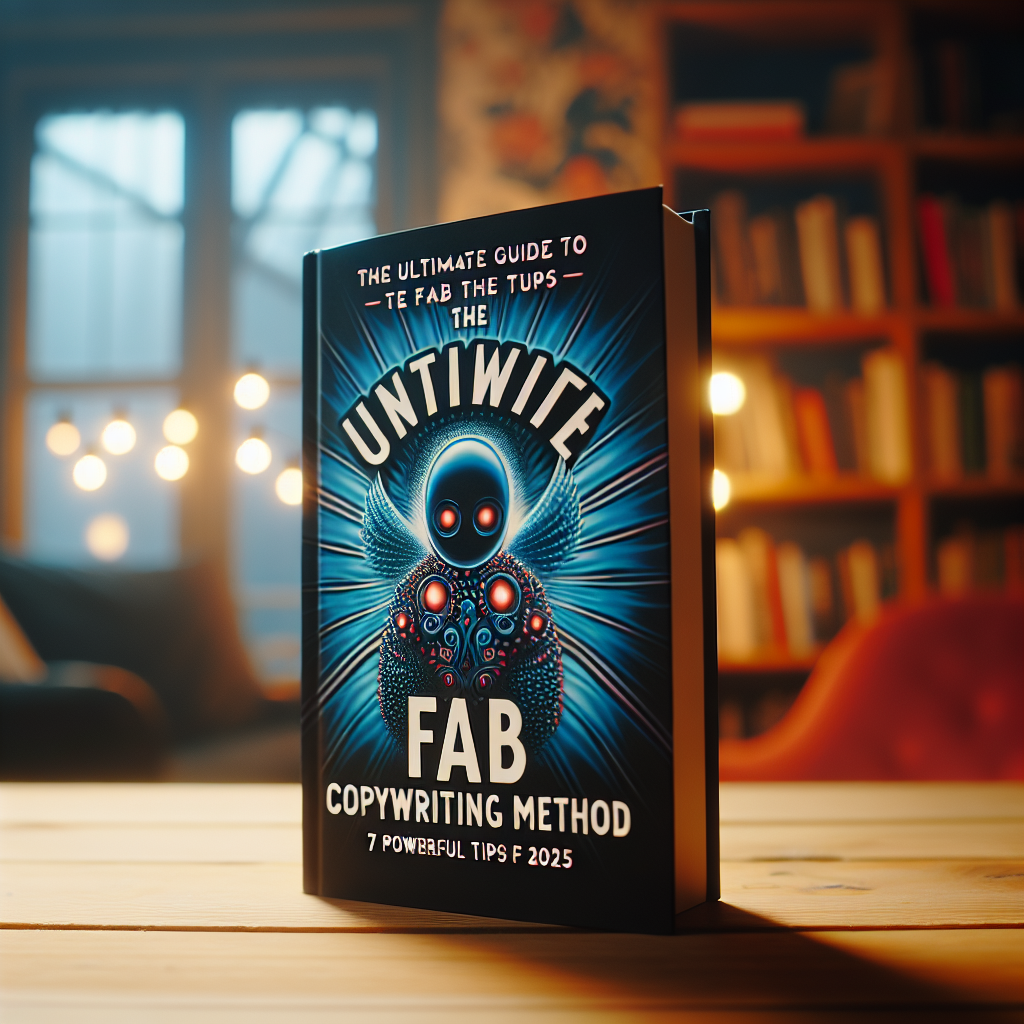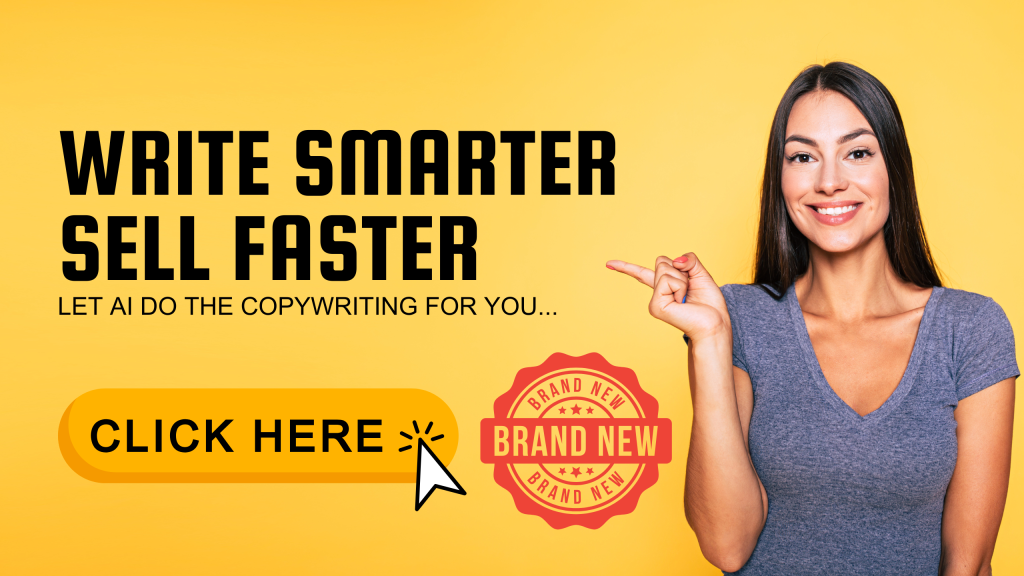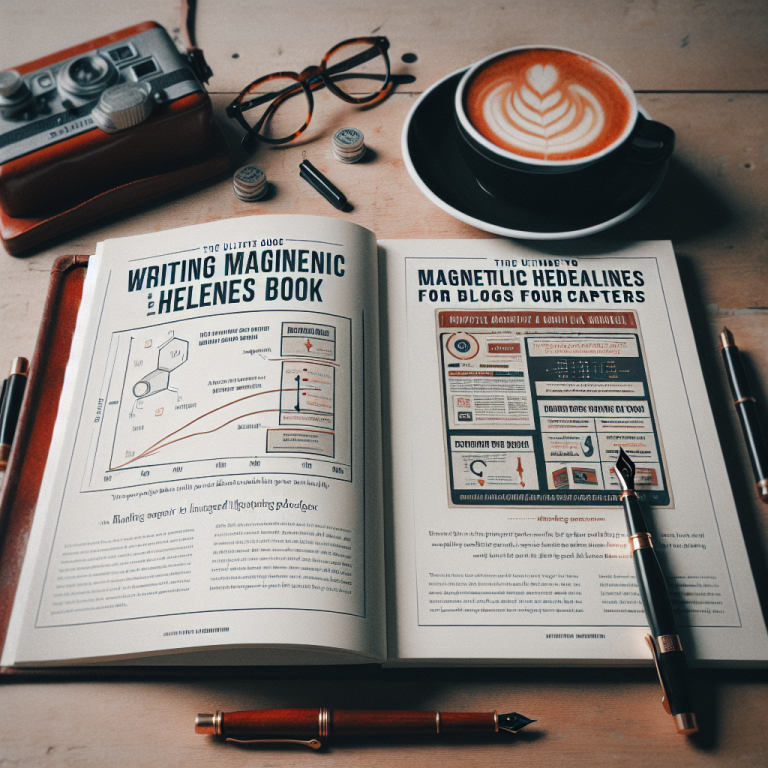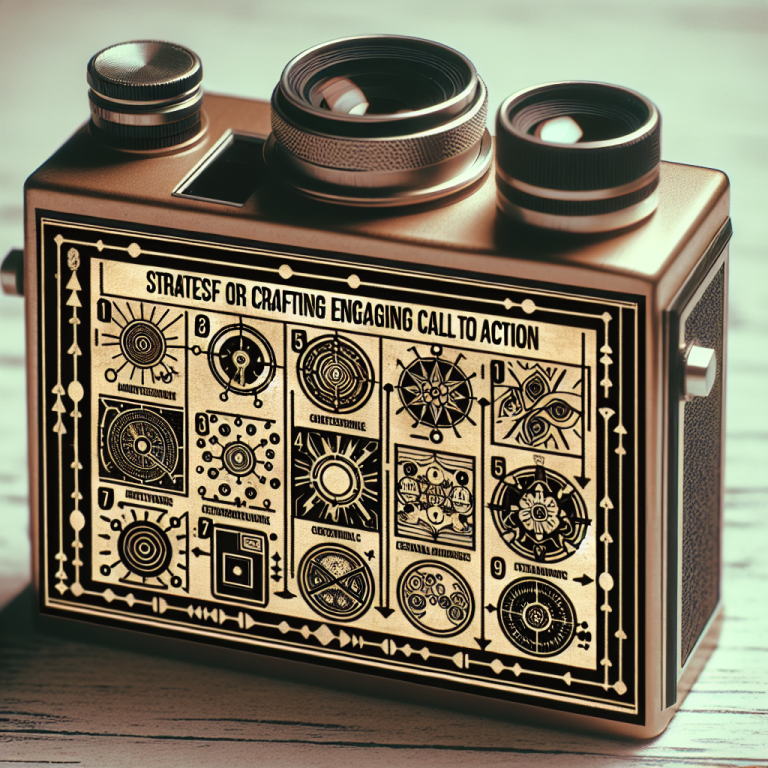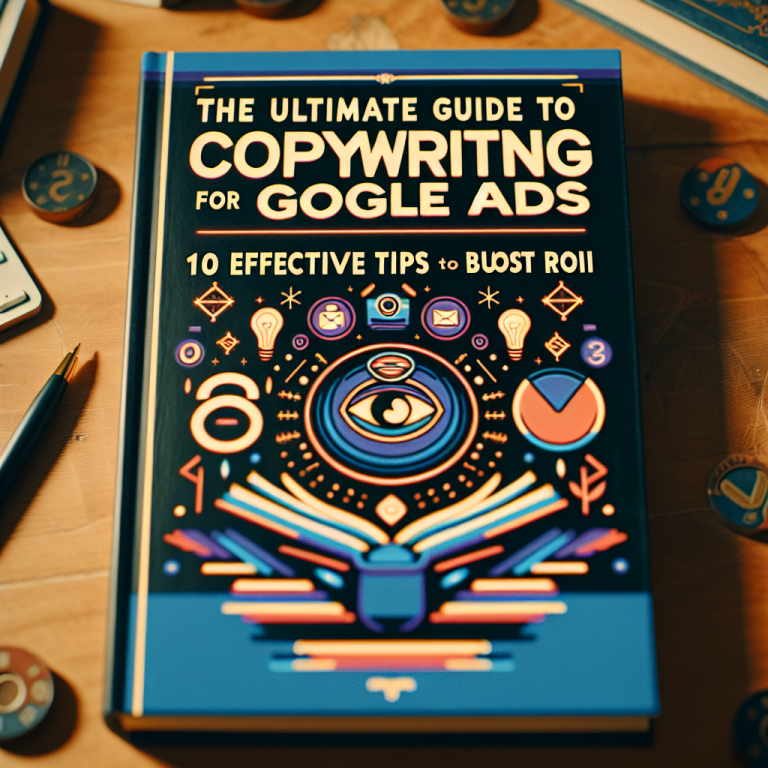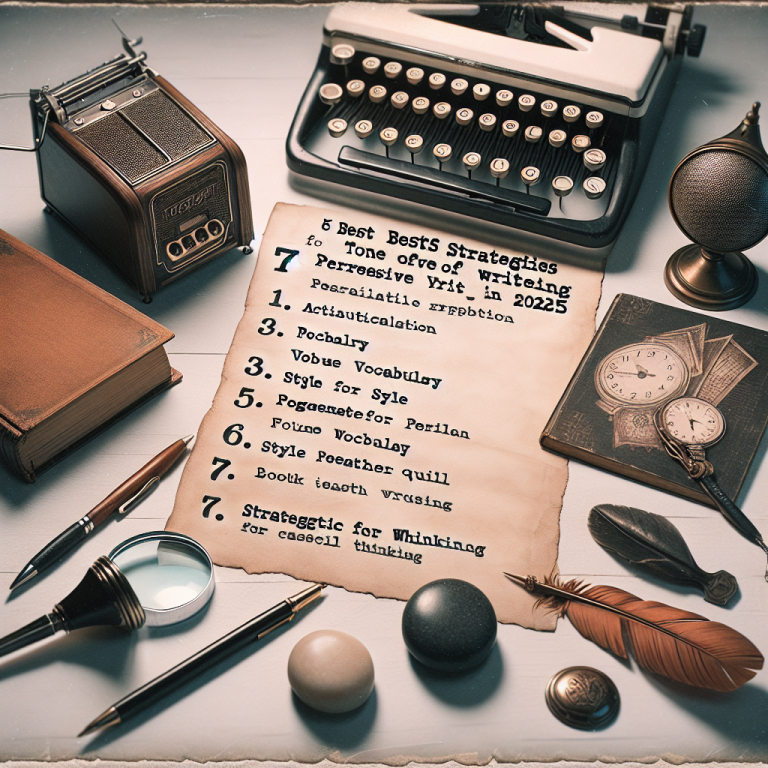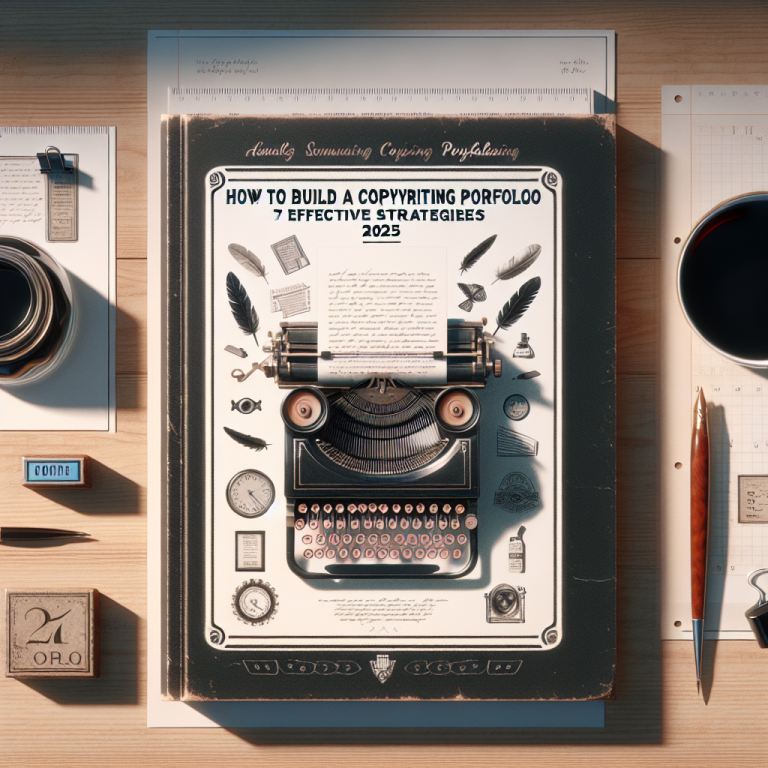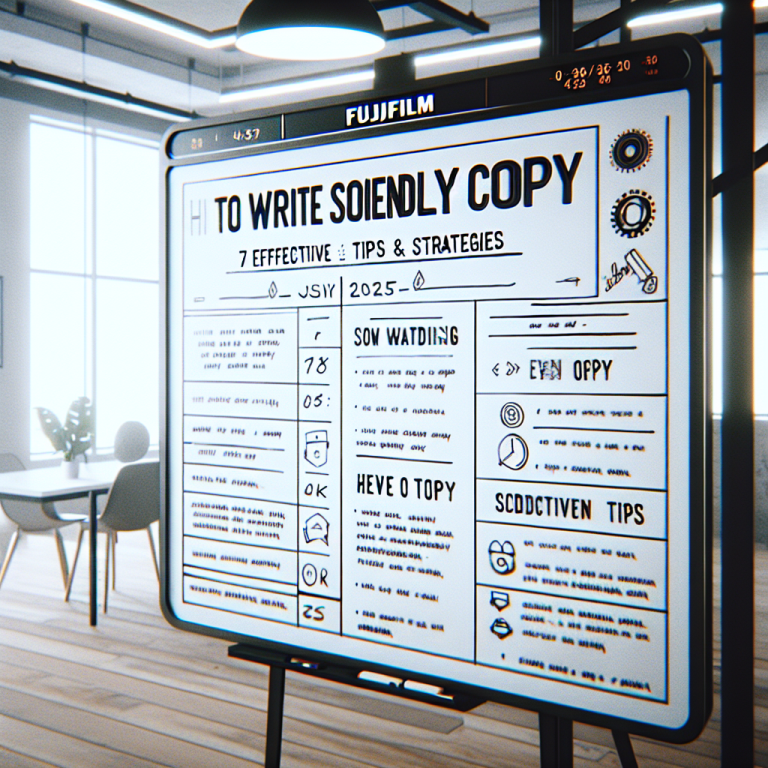The Ultimate Guide to the FAB Copywriting Method: 7 Powerful Tips for 2025
- 1. Understanding the FAB Copywriting Method
- 2. Highlighting Features Effectively
- 3. Demonstrating Advantages Clearly
- 4. Showing the Benefits to Your Audience
- 5. Incorporating Storytelling Techniques
- 6. Using Data and Evidence
- 7. Optimizing Your FAB Copy for 2025 Trends
Are you looking to craft compelling marketing messages that truly resonate with your audience? The FAB copywriting method is a timeless technique that remains highly relevant in 2025. This method helps writers focus on showcasing features, advantages, and benefits in a way that captures attention and drives conversions. In this comprehensive guide, Iâll walk you through 7 powerful tips to master the FAB copywriting method and elevate your marketing game this year.
1. Understanding the FAB Copywriting Method
What is the FAB Copywriting Method?
The FAB copywriting method is a structured approach to crafting persuasive messages by focusing on three key elements: Features, Advantages, and Benefits. Itâs a simple yet effective framework that helps highlight what a product or service can do, why itâs better than competitors, and how it positively impacts the customerâs life.
In essence, the method guides you to answer three core questions: What does the product feature? How does it provide an advantage? And what is the benefit for the customer? By systematically addressing these points, your copy becomes more compelling and customer-centric.
According to recent marketing research, utilizing the FAB copywriting method can increase conversion rates by up to 25% in 2025, because it directly appeals to customer needs and desires.
Why the FAB copywriting method is still relevant in 2025
Despite the rise of new marketing trends and digital tools, the fundamental principle of connecting products to customer benefits remains crucial. The FAB copywriting method offers clarity and focus, ensuring your message is concise yet impactful.
With consumers being bombarded with information, clear value propositionsâcrafted using the FAB frameworkâstand out more than ever. In 2025, successful brands prioritize benefit-driven messaging because it builds trust and drives engagement.
By mastering the FAB copywriting method, you ensure your marketing remains relevant, persuasive, and aligned with the preferences of today’s savvy consumers.
2. Highlighting Features Effectively
Identifying the Right Features to Promote
The first step in applying the FAB copywriting method is selecting the most impactful features. Features are simply the attributes or characteristics of your product or service. But not all features are equally compelling; focus on those that solve specific problems or meet strong needs.
To identify these features, gather customer feedback and analyze what they value most. For example, if youâre selling a smartphone, important features might include its battery life, camera quality, or durability. Highlight features that differentiate your offering in a crowded market in 2025.
Remember, in the #FAB copywriting method, feature descriptions should be clear, concise, and tailored to your audienceâs interests to maximize engagement.
How to Present Features that Resonate
When writing about features, avoid generic descriptions. Instead, focus on how each feature provides tangible value. For example, replacing âhigh-resolution cameraâ with âcapture stunning photos that impress your friends, even in low-light conditionsâ makes the feature more relatable.
Use visual aids or demonstrations when possible, like videos or infographics, to showcase features in action. In 2025, adding AR or VR elements can make features come alive, giving your audience an immersive experience.
Incorporating storytelling around features can turn a technical detail into an emotional connection, which is a core aspect of the FAB copywriting method.
3. Demonstrating Advantages Clearly
Converting Features into Advantages
Once features are outlined, the next step in the FAB copywriting method is to explain how these features translate into advantages. Advantages clarify why the feature matters and how it improves the userâs experience.
For example, a feature like âfast processing speedâ translates into an advantage: âenjoy seamless multitasking without lag, saving you time and frustration.â Highlight advantages that resonate with the pain points of your target audience in 2025.
Remember, advantages bridge the gap between product specs and the customerâs actual needs, making your message more persuasive and relevant.
Structuring Advantage Statements for Impact
Effective advantage statements are clear, concise, and customer-focused. Use active language that emphasizes valueâwords like “save,” “enjoy,” “experience,” or “achieve.” This keeps your messaging powerful and engaging.
Incorporate data or testimonials to validate your advantages. For example, âOur software increases productivity by 30%, helping teams finish projects faster.â Such figures build credibility and trust.
Keep practicing to craft advantages that are specific, measurable, and directly address your customerâs desires in 2025’s competitive landscape.
4. Showing the Benefits to Your Audience
Translating Advantages into Benefits
Benefits are the ultimate persuaders; they answer the customerâs question: âWhatâs in it for me?â The FAB copywriting method emphasizes turning advantages into benefits to create emotional appeal and motivate action.
For example, turning âlong-lasting battery lifeâ into âstay connected all day without worrying about recharging, so you can focus on what matters most.â This frames the advantage in terms of personal gain.
In 2025, data shows that benefit-driven messaging increases purchase intent by over 20%, as it directly impacts customer satisfaction and life quality.
Using Benefits to Differentiate Your Brand
Benefits are also how your brand stands out from competitors. Use unique value propositions tailored specifically to your audience. Highlight how your product or service uniquely improves their lives compared to others in the market.
Leveraging customer stories or testimonials that emphasize real benefits can make a significant impression. For example, a fitness app that helps users lose weight faster and stay motivated builds trust and credibility.
Remember, benefits should always be client-centric and framed in a way that appeals to their emotions, making your message more persuasive in 2025âs dynamic market environment.
5. Incorporating Storytelling Techniques
Why Storytelling Enhances the FAB Copywriting Method
Storytelling turns ordinary product descriptions into memorable narratives. In the context of the FAB copywriting method, stories illustrate how features and benefits positively impact real lives, making your message resonate deeply.
For instance, sharing a customerâs success story about how a health tracker helped them run their first marathon makes the benefits tangible and emotional. People connect with stories more than plain facts or figures.
In 2025, storytelling remains one of the top content strategies to increase engagement, making it an essential tool in your FAB framework.
Crafting Compelling Stories Around Your Offer
To craft effective stories, focus on relatable characters, clear challenges, and satisfying resolutions that highlight your productâs role. This narrative approach humanizes your brand, fostering trust and loyalty.
Use multimedia, like videos or customer interviews, to enhance storytelling efficacy. Incorporate testimonials that demonstrate benefits in everyday scenarios.
By weaving storytelling into your FAB copywriting method, your marketing will stand out in 2025, capturing hearts and minds simultaneously.
6. Using Data and Evidence
Backing Up Your Claims with Evidence
In the digital age, consumers demand proof. Supporting your features, advantages, and benefits with data, testimonials, or case studies enhances credibility. The FAB copywriting method integrates evidence seamlessly to build trust.
A stat showing that âusers who adopted our platform saw a 40% increase in efficiencyâ reinforces your claims and adds authority. Use reputable sources, reports, or certifications when possible.
In 2025, evidence-based claims have become a baseline expectation; brands that provide proof hold a significant competitive advantage.
Including Data in Your Copy and Visuals
Use infographics, charts, and statistics to support your copy visually, making complex data easy to understand. Visual data increases retention and impacts decision-making.
Always cite sources for your data to maintain transparency and credibility. As consumers become more skeptical, transparent evidence is key to convincing them.
Effective integration of data within the FAB copywriting method helps in crafting authoritative and compelling marketing messages suitable for 2025 trends.
7. Optimizing Your FAB Copy for 2025 Trends
Adapting to AI and Personalization
In 2025, AI-driven personalization is reshaping how brands communicate. Incorporate data-driven insights to tailor your FAB messaging to individual preferences, behaviors, and contexts.
Use AI tools to analyze customer data and craft dynamic copy that emphasizes the most relevant features, advantages, and benefits. Personalization boosts engagement and conversions significantly.
Remember, the FAB copywriting method can be adapted to suit these advanced personalization techniques, making your messaging more impactful in the digital landscape of 2025.
Staying Ahead with Emerging Trends
To stay competitive, continually refine your FAB approach with the latest trends in marketing, such as augmented reality, voice search, and interactive content. These innovations can help demonstrate features and benefits in immersive ways.
By aligning your messaging with future trends, your brand remains relevant and appealing. The FAB copywriting method is flexible enough to incorporate these new channels and formats.
Consistent innovation and adaptation ensure your messaging remains compelling and persuasive for 2025 and beyond.
Conclusion
The FAB copywriting method is a cornerstone of effective marketing communication. By understanding and applying its principlesâhighlighting features, demonstrating advantages, and emphasizing benefitsâyou can craft messages that truly resonate with your audience. Incorporating storytelling, evidence, and future trends further amplifies your results in 2025. Mastery of this method ensures your marketing remains persuasive, relevant, and successful in todayâs competitive landscape.
Frequently Asked Questions (FAQ)
- What is the FAB copywriting method?
- The FAB copywriting method is a framework that focuses on highlighting a productâs Features, Advantages, and Benefits to create persuasive marketing messages.
- How can the FAB copywriting method improve my marketing in 2025?
- By emphasizing what makes your product unique and valuable in a clear, benefit-driven way, the FAB copywriting method increases engagement, trust, and conversions, especially with the latest trends shaping 2025 marketing.
- Can I incorporate storytelling into the FAB copywriting method?
- Absolutely! Storytelling enhances the FAB framework by making features and benefits more relatable and emotionally impactful, leading to stronger connection with your audience.
- Why is evidence important in FAB copywriting?
- Using data, testimonials, and case studies provides credibility and supports your claims, which is vital in building trust and persuading consumers in 2025’s data-driven market.
- How do I stay current with the FAB copywriting method?
- Continuously adapt to emerging marketing technologies and trends like AI, AR, and personalization, ensuring your FAB messaging remains fresh and impactful for 2025 audiences.

